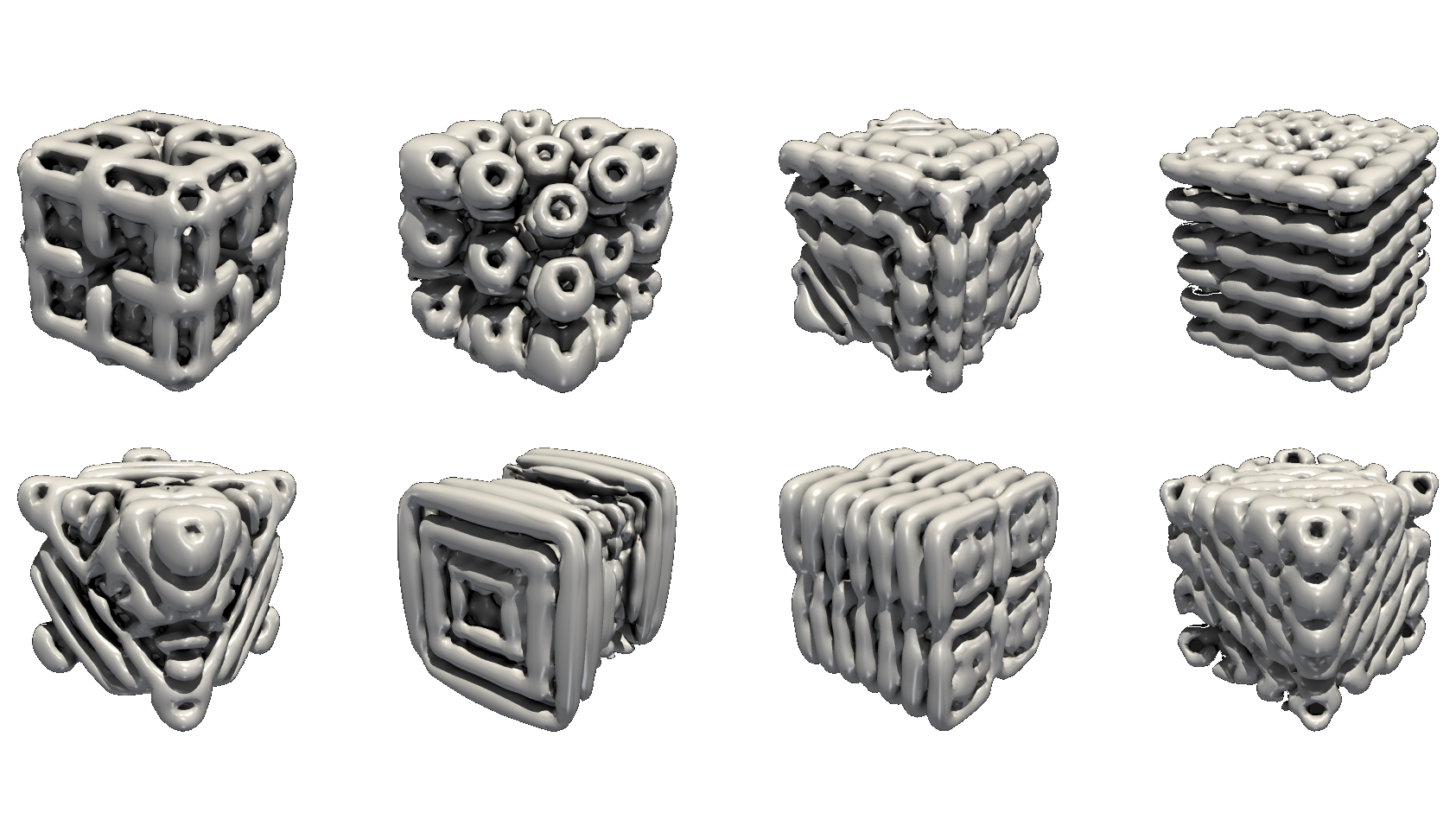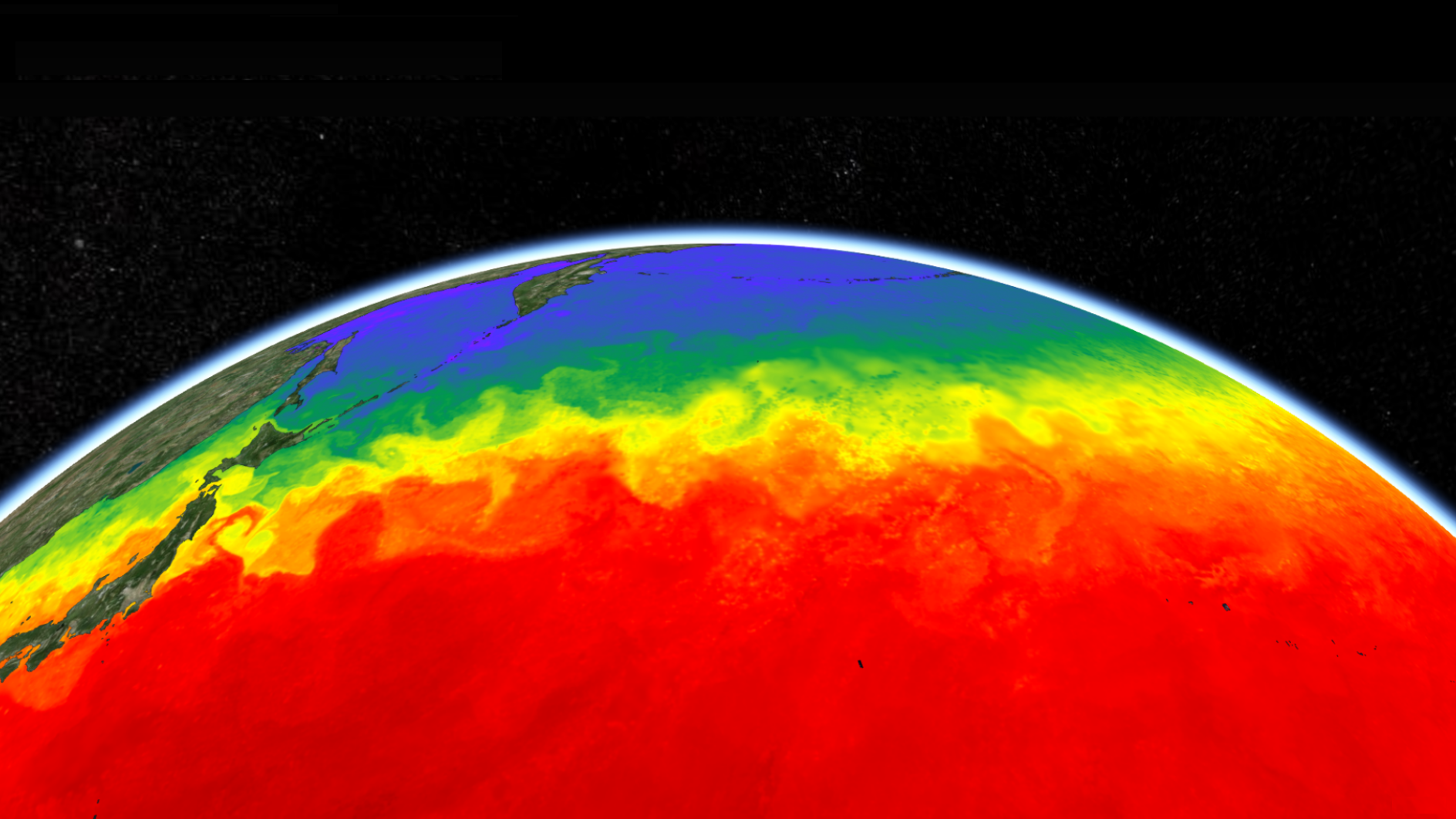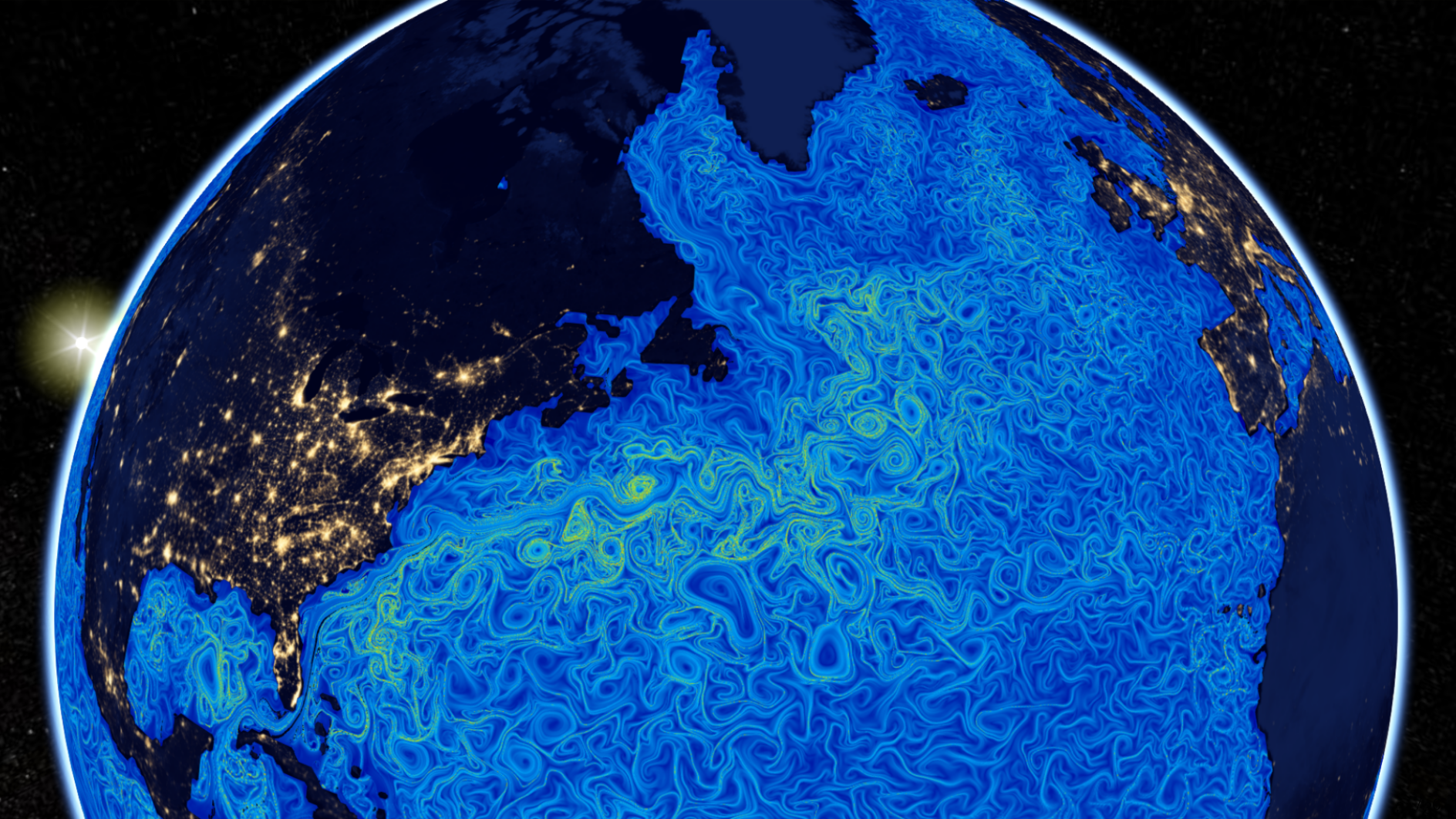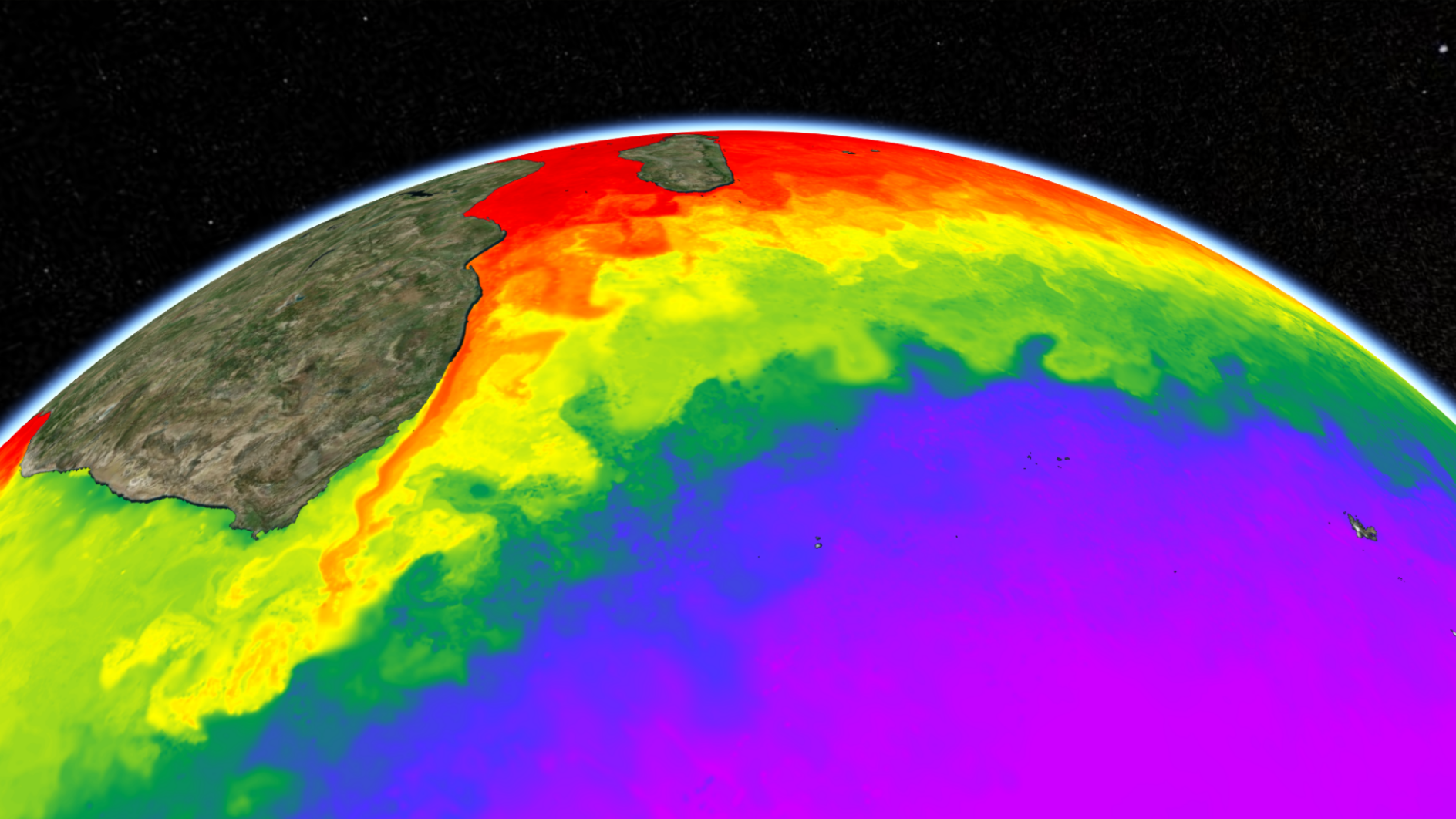
Siavash Ameli
I am a post-doctoral scholar in the Department of Statistics at the University of California, Berkeley, and the Big Data group at ICSI led by Michael Mahoney. I studied Mathematics and Mechanical Engineering and I was fortunate to work with Shawn Shadden as my advisor.
My research includes
- Riemannian and Symplectic geometry and their applications to mechanics of continua
- Dynamical systems, Lie group integrators, and applications to fluid mechanics
- Uncertainty quantification and stochastic modeling
- Linear algebra, including theoretical and computational developments with applications to machine learning
My research in Riemannian geometry and dynamical systems studies the nonlinear deformation of continua (such as fluids) in differential geometric settings (see my dissertation), which has applications in the Lagrangian coherent structures of flows on manifolds (see Gallery and Videos).
I also have been interested to work on the spectral representation of the solenoidal vector fields from a functional analysis point of view (see my thesis and Gallery), which has applications in physics-based supervised learning and reconstruction of incompressible flows. My current research focuses on mathematical aspects of machine learning (Gaussian process, in particular), linear algebra for massive data, and their high-performance implementation.
Along with research, I made several industry-level software packages on a variety of platforms. I am the author of several python packages that can be found on PyPI and Anaconda Cloud (read more at Software), Node.JS apps on npm-js, and Docker images on Docker Hub. To bring the applications of my dissertation to the community, I developed high-performance computing web servers that I host at Berkeley Data Center. These online computational gateways are actively used by several research institutions worldwide (read more at Web Servers).
Education
- Ph.D, Mechanical Engineering, University of California, Berkeley (2019)
- Masters, Mathematics, University of California, Berkeley (2019)
- Masters, Mechanical and Aerospace Engineering, Illinois Institute of Technology (2013)
Publications
-
Ameli, S., Shadden. S. C. (2023). A Singular Woodbury and Pseudo-Determinant Matrix Identities and Application to Gaussian Process Regression.
Applied Mathematics and Computation 452, 128032
DOI
arXiv
BibTex
PDF
@article{amc-2023, title = {A singular Woodbury and pseudo-determinant matrix identities and application to Gaussian process regression}, journal = {Applied Mathematics and Computation}, volume = {452}, pages = {128032}, year = {2023}, issn = {0096-3003}, doi = {https://doi.org/10.1016/j.amc.2023.128032}, author = {Siavash Ameli and Shawn C. Shadden}, } -
Ameli, S., Shadden. S. C. (2022). Noise Estimation in Gaussian Process Regression.
arXiv
BibTex
PDF
@misc{arxiv.2206.09976, doi = {10.48550/ARXIV.2206.09976}, title = {Noise Estimation in {Gaussian} Process Regression}, author = {Ameli, S. and Shadden, S. C.}, year = {2022}, archivePrefix = {arXiv}, eprint = {2206.09976}, primaryClass = {cs.LG}, howpublished = {\emph{arXiv}: 2206.09976 [cs.LG]}, } -
Ameli, S., Shadden. S. C. (2022). Interpolating Log-Determinant and Trace of the Powers of Matrix \(\mathbf{A} + t \mathbf{B}\).
Statistics and Computing 32, 108.
DOI
arXiv
BibTex
PDF
@article{Ameli2022, title = {Interpolating log-determinant and trace of the powers of matrix \(\mathbf{A} + t \mathbf{B}\)}, author = {Ameli, Siavash and Shadden, Shawn C}, journal = {Statistics and Computing}, volume = {32}, number = {6}, pages = {108}, month = {Nov}, year = {2022}, doi = {10.1007/s11222-022-10173-4}, url = {https://doi.org/10.1007/s11222-022-10173-4}, } -
Ameli, S. (2019). Riemannian Geometry of Nonlinear Deformation.
Doctoral dissertation, University of California, Berkeley.
Abstract
BibTex
PDF
Slides
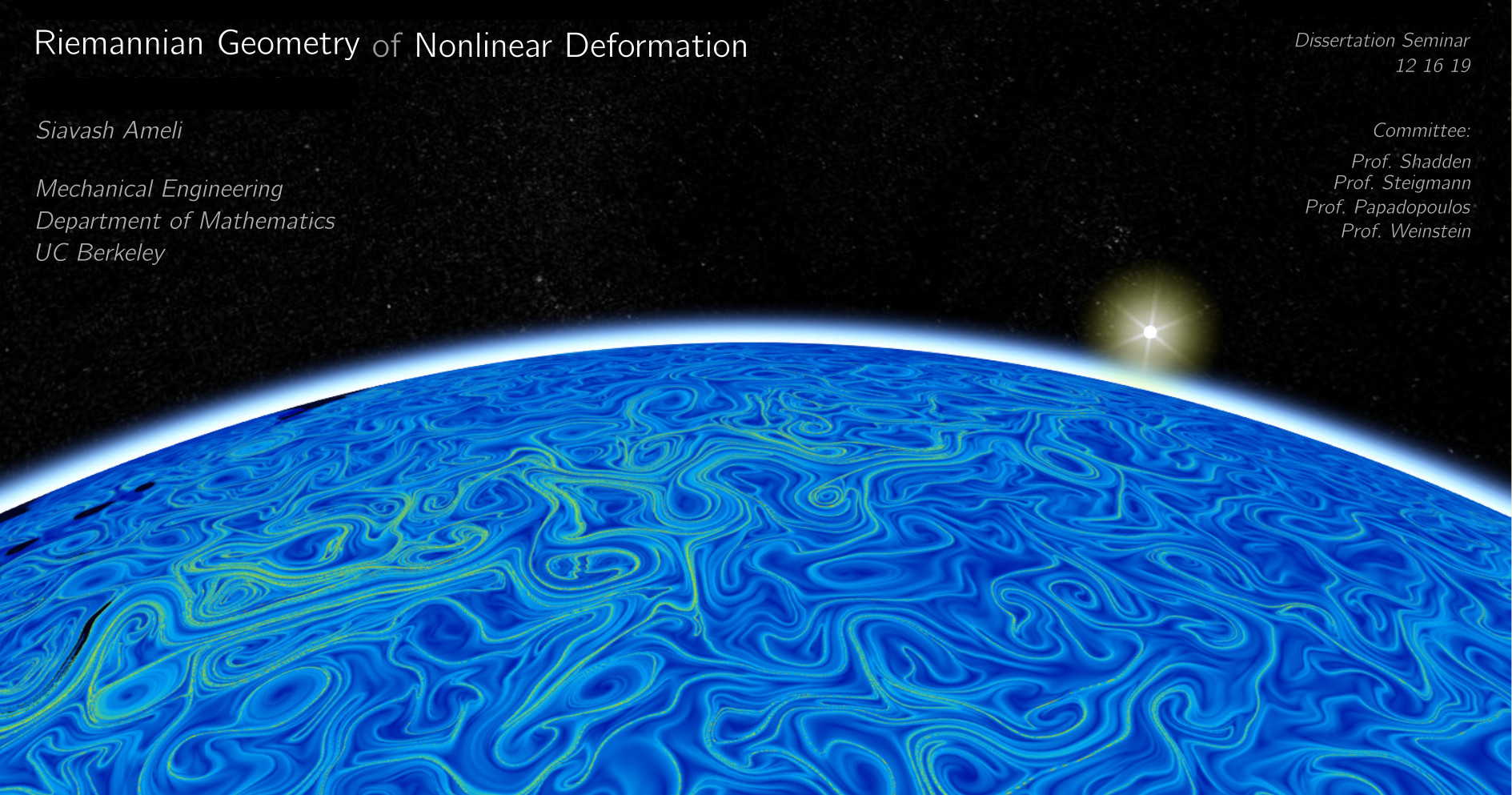 Gallery
Videos
Gallery
Videos
@phdthesis{ameli-2019a, author = "Siavash Ameli", title = "Riemannian Geometry of Nonlinear Deformation", school = "University of California, Berkeley", year = "2019" } -
Ameli, S. (2019). Spectral Representation of Solenoidal Fields.
Thesis, University of California, Berkeley.
BibTex
PDF
Slides
 Gallery
Gallery
@mastersthesis{ameli-2019b, author = "Siavash Ameli", title = "Spectral Representation of Solenoidal Fields", school = "University of California, Berkeley", year = "2019" } -
Ameli, S., Shadden. S. C. (2018). A Transport Method for Restoring Incomplete Ocean Current Measurements.
Journal of Geophysical Research: Oceans, 124, 227-242.
DOI
arXiv
BibTex
PDF
@article{https://doi.org/10.1029/2018JC014254, author = {Ameli, Siavash and Shadden, Shawn C.}, title = {A Transport Method for Restoring Incomplete Ocean Current Measurements}, journal = {Journal of Geophysical Research: Oceans}, volume = {124}, number = {1}, pages = {227-242}, doi = {https://doi.org/10.1029/2018JC014254}, url = {https://agupubs.onlinelibrary.wiley.com/doi/abs/10.1029/2018JC014254}, eprint = {https://agupubs.onlinelibrary.wiley.com/doi/pdf/10.1029/2018JC014254}, year = {2019} } -
Ameli, S., Desai, Y., Shadden. S. C. (2014). Development of an Efficient and Flexible Pipeline for Lagrangian Coherent Structure Computation.
Topological Methods in Data Analysis and Visualization III. Mathematics and Visualization. Springer Cham.
DOI
arXiv
BibTex
PDF
@InProceedings{10.1007/978-3-319-04099-8_13, author = "Ameli, Siavash and Desai, Yogin and Shadden, Shawn C.", editor = "Bremer, Peer-Timo and Hotz, Ingrid and Pascucci, Valerio and Peikert, Ronald", title = "Development of an Efficient and Flexible Pipeline for Lagrangian Coherent Structure Computation", booktitle = "Topological Methods in Data Analysis and Visualization III", year = "2014", publisher = "Springer International Publishing", address = "Cham", pages = "201--215", isbn = "978-3-319-04099-8" }
Invited Talks
- Ameli, S. (2023). Generalized Inverses and Randomized Algorithms for Gaussian Process Models. Linear Algebra and Optimization Seminars, Institute for Computational & Mathematical Engineering, Stanford University. Abstract Slides
-
Ameli, S. (2019). Spectral Representation and Approximation of Solenoidal Fields.
Berkeley Fluids Seminar, UC Berkeley.
Abstract
Slides

Conferences
- Ameli, S., Shadden, S. C. (2021). Supervised Learning of Solenoidal Flows by Modal Analysis. SIAM conference on Application of Dynamical Systems, Snowbird UT. Abstract
- Ameli, S., Shadden, S. C. (2020). Reconstruction of Incomplete Spatial Data With Feature Preserving Information Transport. American Geophysical Union, Ocean Science Meeting, San Diego, CA. Abstract
- Ameli, S., Peacock, T., Shadden, S. C. (2020). Stochastic Trajectory Predictions from ADCP Velocity Measurements. American Geophysical Union, Ocean Science Meeting, San Diego, CA. Abstract
- Ameli, S., Shadden, S. C. (2019). Theory and Computation of Nonlinear Deformation Spectra of Flows with Geophysical Applications SIAM conference on Application of Dynamical Systems, Snowbird UT. Abstract
- Filippi, M., Allshouse, M., Ameli, S., Haley, P. J., Kulkarni, C., Lermusiaux, P. F. J., Peacock, T., Rypina, I., Serra, M. (2018). Experimental Comparison of Coherent Structures Methods Applied to Oceanic Flows. 71th annual meeting of American Physical Society, Division of Fluid Dynamics, Atlanta, GA. Abstract
- Frank, S. L., Ameli, S., Szeri, A. J., Shadden, S. C. (2018). Filtering Flow Measurements in the Left Ventricle Using Modal Analysis. 71th annual meeting of American Physical Society, Division of Fluid Dynamics, Atlanta, GA. Abstract
- Ameli, S., Frank, S. L., Shadden, S. C. (2018). Spectral Representation and Filtering of Incompressible Flow. 71th annual meeting of American Physical Society, Division of Fluid Dynamics, Atlanta, GA. Abstract
- Ameli, S., Shadden, S. C. (2018). An Online Gateway for Lagrangian Analysis of Ocean Surface Transport. American Geophysical Union, Ocean Science Meeting, Portland, OR. Abstract
- Ross, S. D., Rypina, I., Shadden, S. C., Peacock, T., Lermusiaux, P. F. J., Allshouse, M., Gawarkiewicz, G., Kirincich, A., Serra, M., Filippi, M., Schmale, D. G., Woolsey, C., Haley, P. J., Jana, S., Mirabito, C., Kulkarni, C., Dutt, A., Gupta, A., Hajj Ali, W., Ameli, S. (2018). Targeted Drifter Deployments Around Martha's Vineyard to Uncover Lagrangian Transport Structures. American Geophysical Union, Ocean Sciences Meeting, Portland OR. Abstract
- Frank, S. L., Ameli, S., Szeri, A. J., Shadden, S. C. (2018). De-Noising of Three-Dimensional Velocity Fields Using Modal Analysis. 8th World Congress of Biomechanics, Dublin, Ireland.
- Ameli, S., Shadden, S. C. (2017). A Vorticity Transport Model to Restore Spatial Gaps in Velocity Data. 70th annual meeting of American Physical Society, Division of Fluid Dynamics, Denver, CO. Abstract
- Frank, S. L., Ameli, S., Szeri, A. J., Shadden, S. C. (2017). Three-Dimensional Velocity Field De-Noising Using Modal Projection. 70th annual meeting of American Physical Society, Division of Fluid Dynamics, Denver, CO. Abstract
- Ameli, S., Shadden, S. C. (2016). Computation of the Deformation Spectrum for Flows on a Sphere. 69th annual meeting of American Physical Society, Division of Fluid Dynamics, Portland, OR. Abstract
- Ameli, S., Shadden, S. C. (2014). An Accurate Computation of the Flow Map Gradient. Berkeley/Stanford CompFest, Stanford University, Palo Alto, CA.
- Ameli, S., Shadden, S. C. (2014). An Accurate Computation of the Flow Map Gradient. 67th annual meeting of American Physical Society, Division of Fluid Dynamics, San Francisco, CA. Abstract
- Ameli, S., Shadden, S. C. (2013). An Extension of Shear and Strain LCS Concepts to Higher Dimensions. 66th annual meeting of American Physical Society, Division of Fluid Dynamics, Pittsburgh, PA. Abstract
- Ameli, S., Shadden, S. C. (2013). Software Development for Lagrangian Coherent Structure Computation. Berkeley/Stanford CompFest, University of California, Berkeley, CA.
- Shadden, S. C., Ameli, S., Desai, Y. (2013). Development of an Efficient and Flexible Pipeline for Lagrangian Coherent Structure Computation. SIAM conference on Application of Dynamical Systems, Snowbird UT. Abstract


